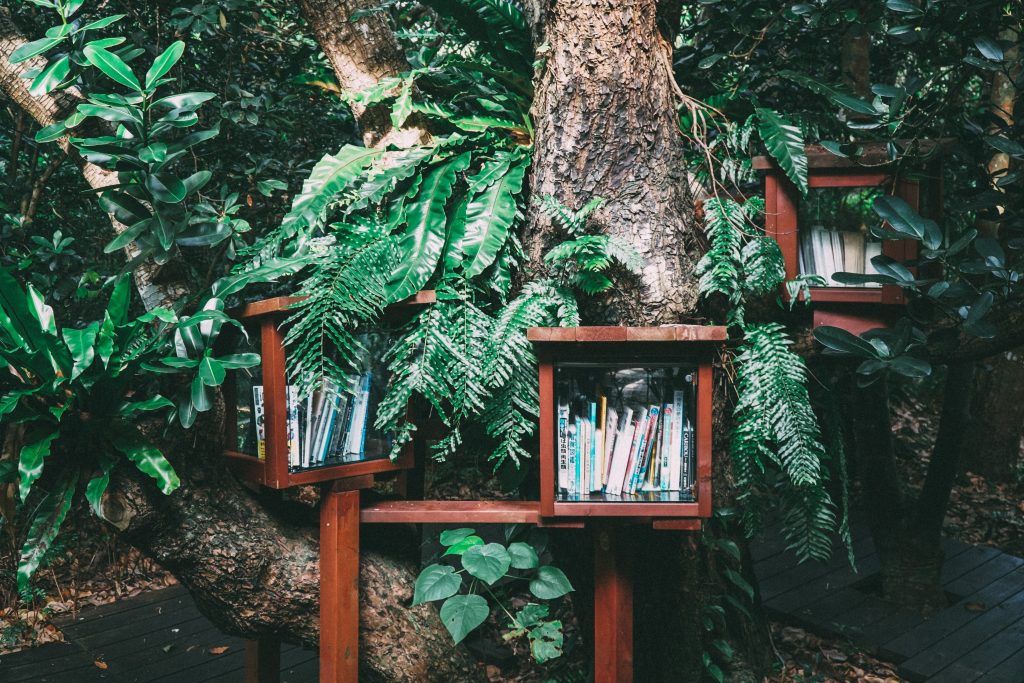What’s the perfect summer read for an environmentally conscious teacher? A library of classic environmental reads. Over the past decades, many volumes have earned space beside Rachel Carson’s Silent Spring. Some are prompting comment on America’s WILD READ, a virtual book club moderated at http://americaswildlife.org/wildread/. The book club was recently launched by the U.S. Fish and Wildlife Service to help stimulate the process of crafting a new vision for their National Wildlife Refuge System. Here are some great reads to inspire and provoke thought and action. You will find more ideas in readers’ postings on the website.

(2008)by Joel Berger

In a thrilling book describing his work collaring moose in the Tetons, field biologist Joel Berger offers insight into the complex relationship between predator and prey, showing how large animals change behaviour— sometimes to their detriment—in response to changing assessments of risk.

(1966) by Olaus and Margaret Murie

Legendary naturalists Margaret and Olaus Murie take turns describing their work and life together in the mountains of the Tetons, where game biologist Olaus Murie studied American elk, or wapiti. Pen-and-ink drawings by Olaus Murie and four pages of photos enhance the text.

(1978) by Barry Holstun Lopez

In this National Book Award finalist, American poet and essayist Barry Lopez examines interactions between wolves and men, and delves into the biology and mythology of wolves.

A History of Ecological Ideas
(1977) by Donald Worster

Where did the concept of ecology begin and who helped shape it? Environmental historian Donald Worster examines the intellectual and philosophical contributions of Linnaeus, Gilbert White, Darwin, Thoreau and others. New editions look at recent shifts in ecological thinking.

(1968) by Edward Abbey

In this sometimes riotous and sometimes chilling memoir, environmental hero and iconoclast Ed Abbey recounts his adventures and reflects on his experiences as a ranger at Arches National Park outside Moab, Utah. The book is a classic and poetic meditation on the relationship between man and nature.

(2010) by Edward O. Wilson

This debut novel by a Pulitzer Prize winner and Harvard entomology professor follows a young protagonist into Alabama’s Nokobee wilderness, where the author explores the relationship of man and nature. The book’s best-known central section, detailing the life and death of an ant colony, was published separately in the New Yorker magazine. The

(2003) by Rick Bass

Writer and environmental activist Rick Bass follows an effort by the U.S. Fish and Wildlife Service to reintroduce orphaned wolves to the Ninemile valley of northwest Montana, over the objections of the state and some special interest groups.

The Record of a 30,000 Mile Journey Around the Continent by a Distinguished Naturalist and His British Colleague
(1956) by Roger Tory Peterson and James Fisher

In 1953 famed American ornithologist Roger Tory Peterson joined British pal and seabird expert James Fisher on a madcap 100-day tour of America’s great wildlife refuges. The two naturalists chronicled their adventures in a now-classic book that includes their wry observations on animal biology and human sociology, and relates such wonderful esoterica as the courting behaviour of dragonflies.
Making a Life on a Tough New Planet
(2010) by Bill McKibben
We no longer inhabit the same planet our ancestors did, since climate change induced by human activity has ended climatic stability, just as the author warned it would 20 years ago. And it’s past time for us to adjust by living lightly, protecting what we still have, reducing our impact and refusing—despite everything—to give up hope.
An Unnatural History of Family and Place
(1992) by Terry Tempest Williams
A Utah naturalist muses on her mother’s death to cancer, as she searches for meaning in the government’s nuclear-weapons tests in the nearby Nevada desert and the flooding of a Great Salt Lake bird sanctuary.
Life, Death, and Ecological Wreckage in a Land of Vanishing Predators
(2009) by William Stolzenburg
What happens when we rid an ecosystem of its largest predators? It’s not a pretty picture. Without sea otters to keep them in check, sea urchins strip ocean floors of kelp. Without wolves, elk overrun river banks. When populations of mid-sized predators swell to fill a vacuum left by the loss of alpha predators, Stolzenburg shows, smaller species pay, and biodiversity is lost. The book builds an appreciation for nature’s complexity.
(1949) by Aldo Leopold
Part memoir, part argument, this posthumous volume is one of the most influential nature books ever published. Written from Leopold’s summer shack in Baraboo, Wisconsin, the book movingly recounts personal anecdotes that helped formed the conservationist’s land ethic and conviction that we must preserve the balance of nature and as much wild land as possible.
The Future of the Last Wild Food
(2010) by Paul Greenberg
Time was when the oceans were a source of seemingly endless bounty. The efficiency of commercial fishing has changed that, putting at risk the wild populations of our most common food fish: salmon, bass, cod and tuna. Greenberg explains why these four fish are poor candidates for farming and explores where this leaves us.
(2009) by Colin Beavan
With honesty, humor and some self-mockery, the author describes his yearlong attempt to minimize his environmental impact.
Susan Morse
Susan Morse is a writer/editor with the U.S. Fish and Wildlife Service.
This article is from Canadian Teacher Magazine’s Spring 2020 issue.

